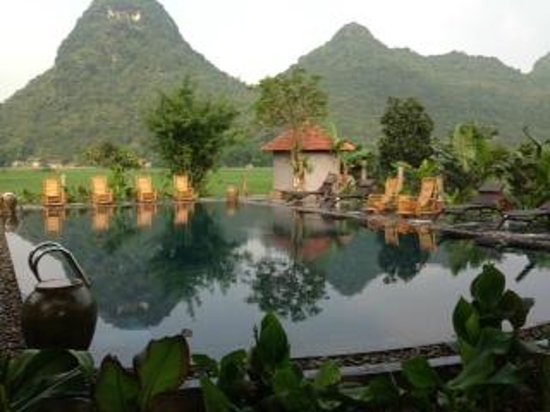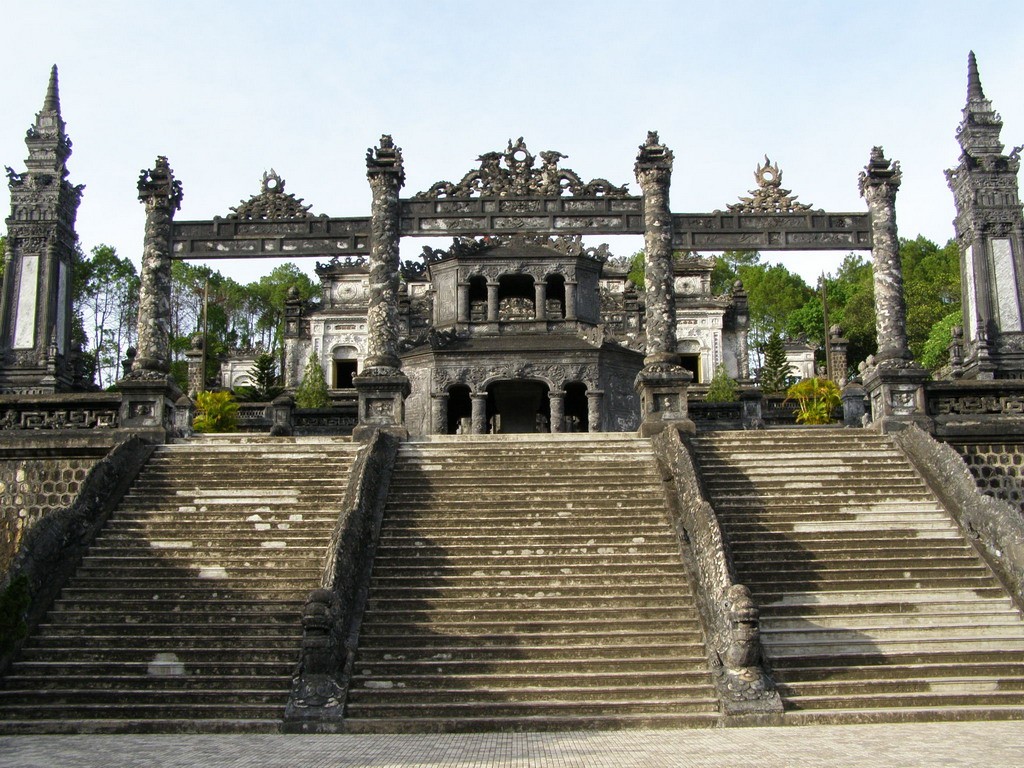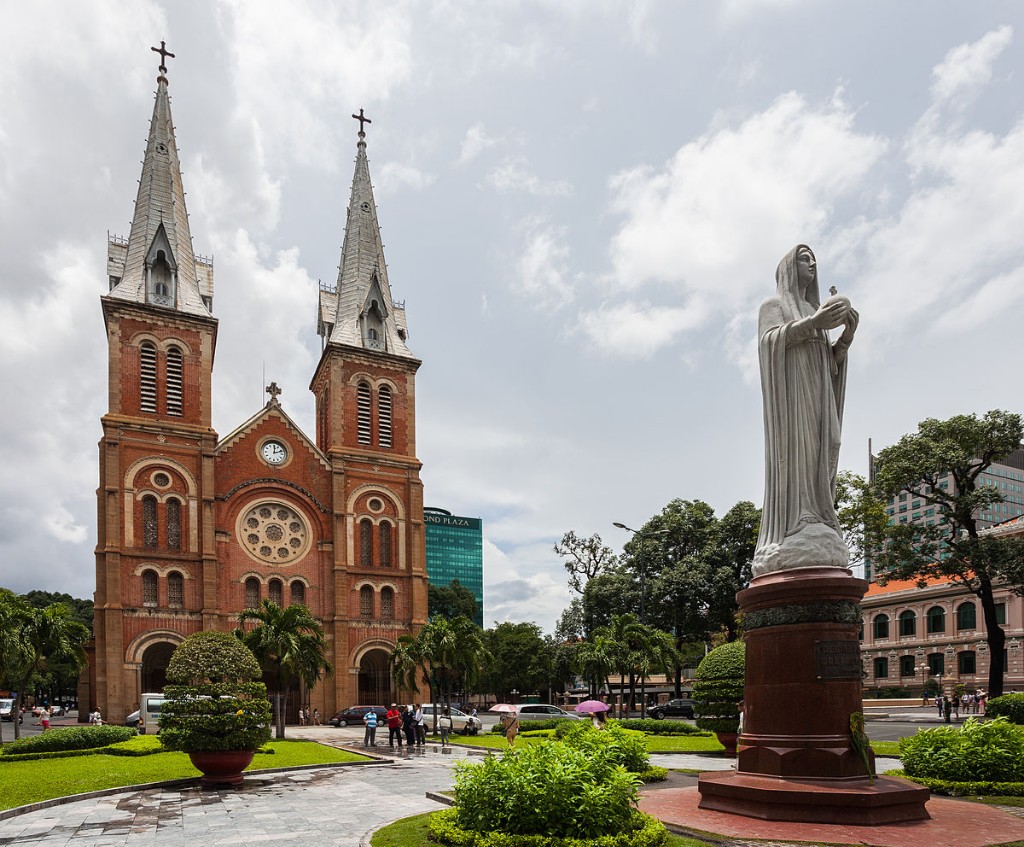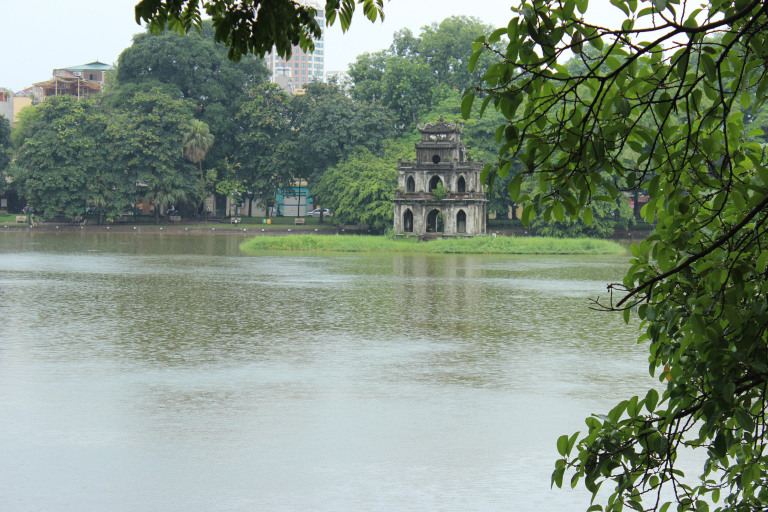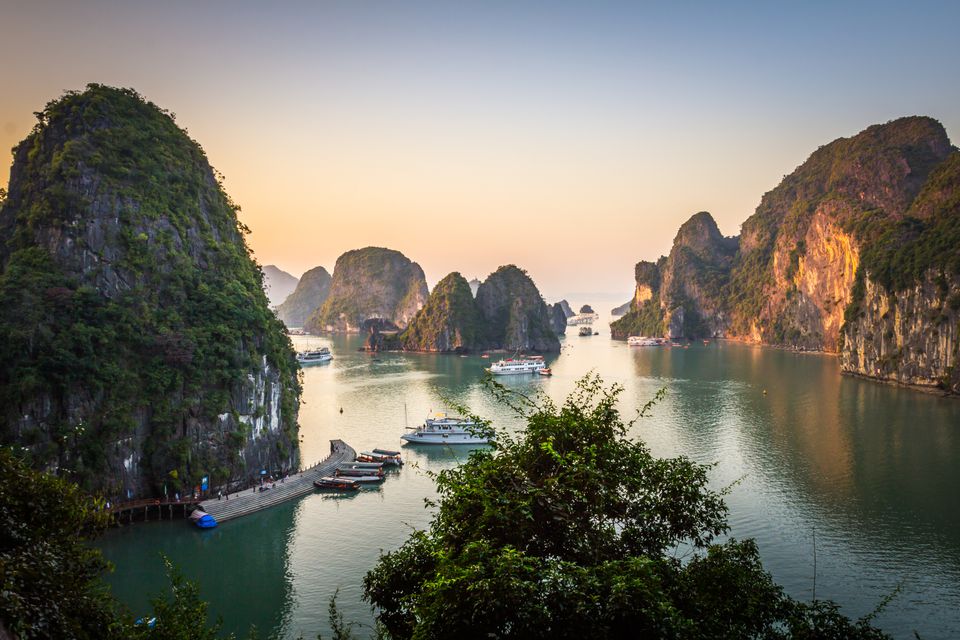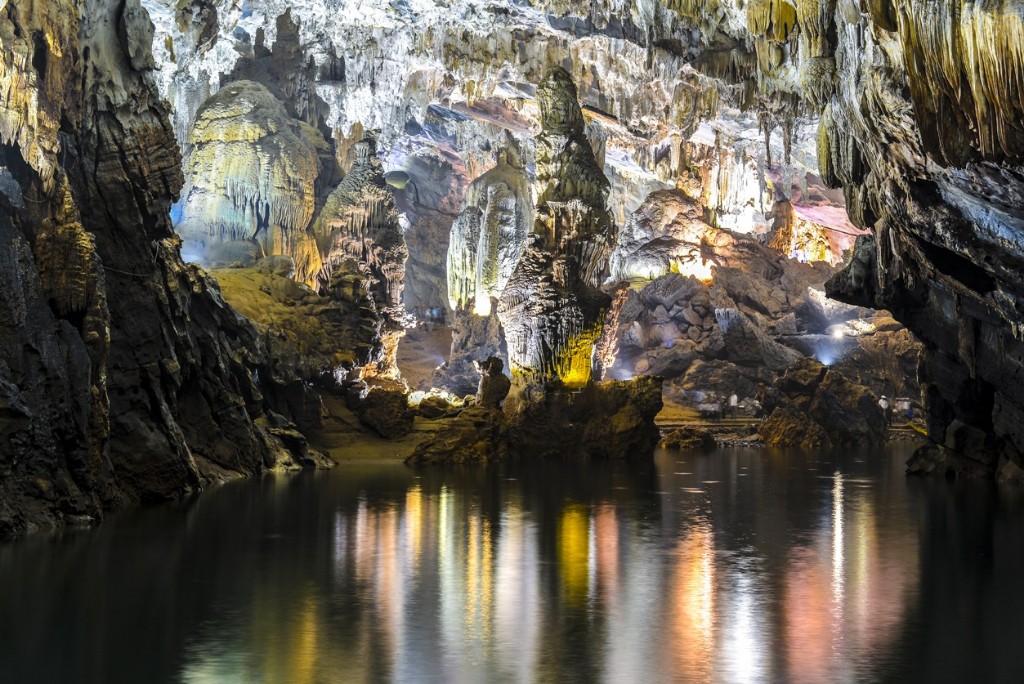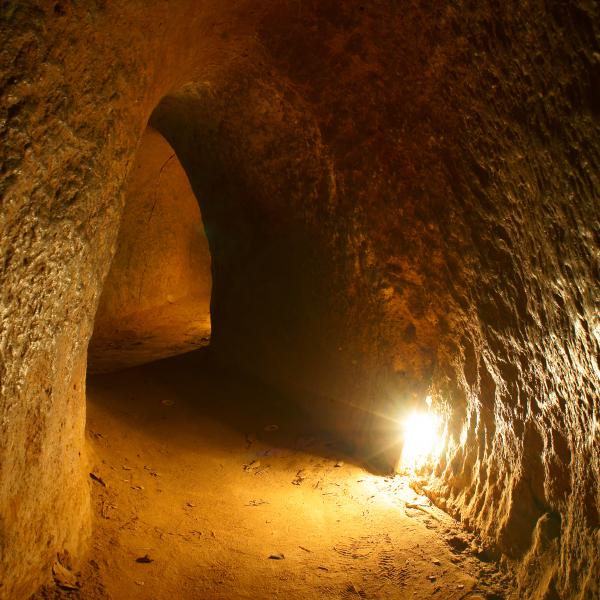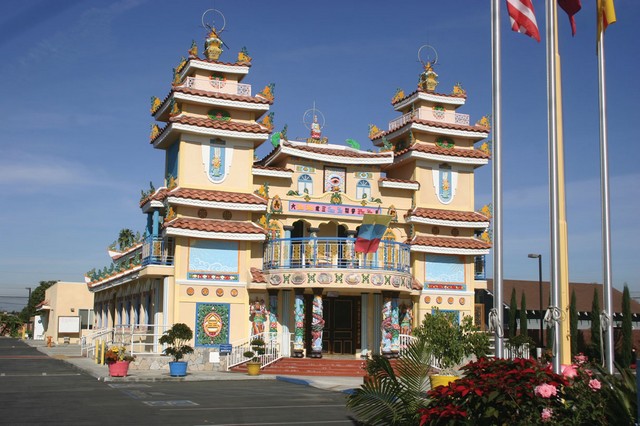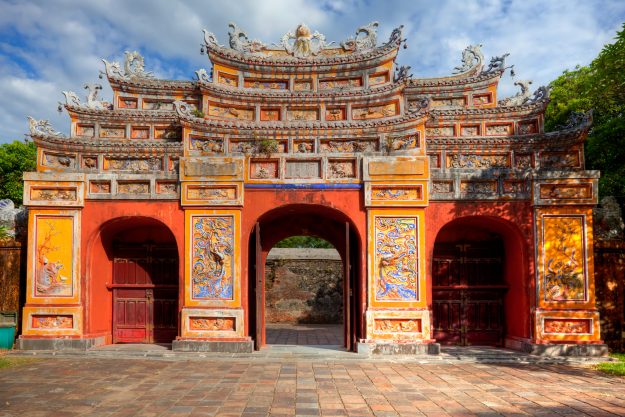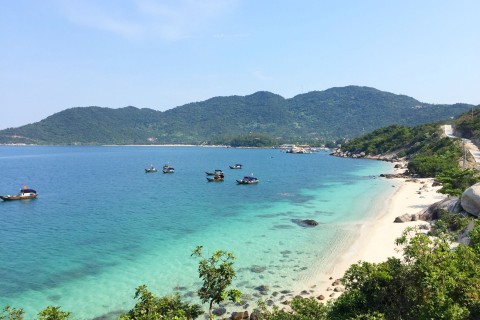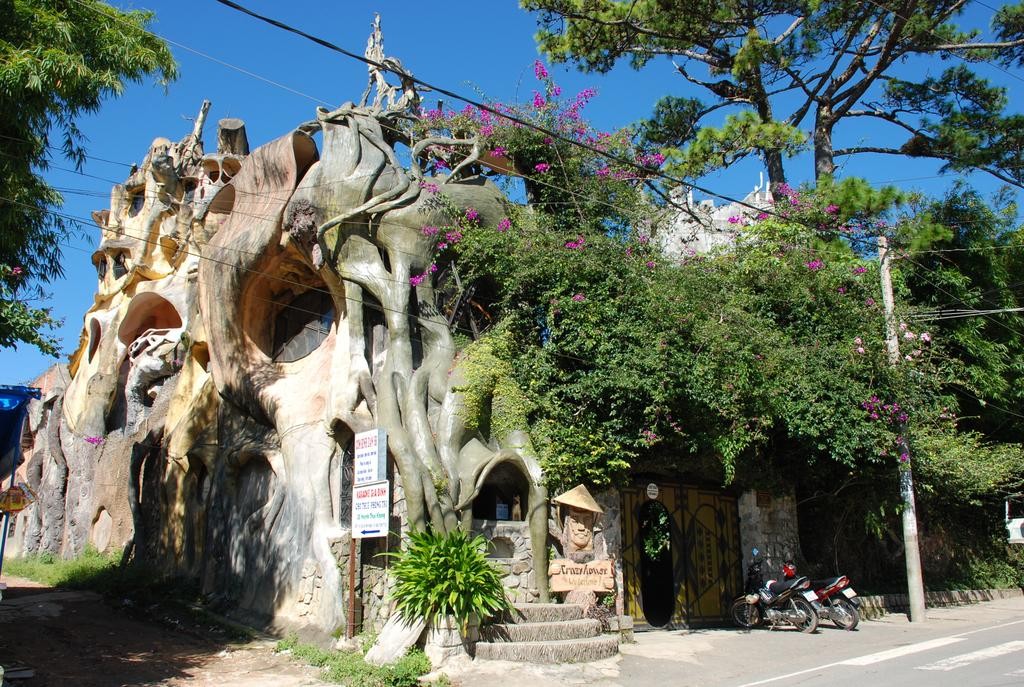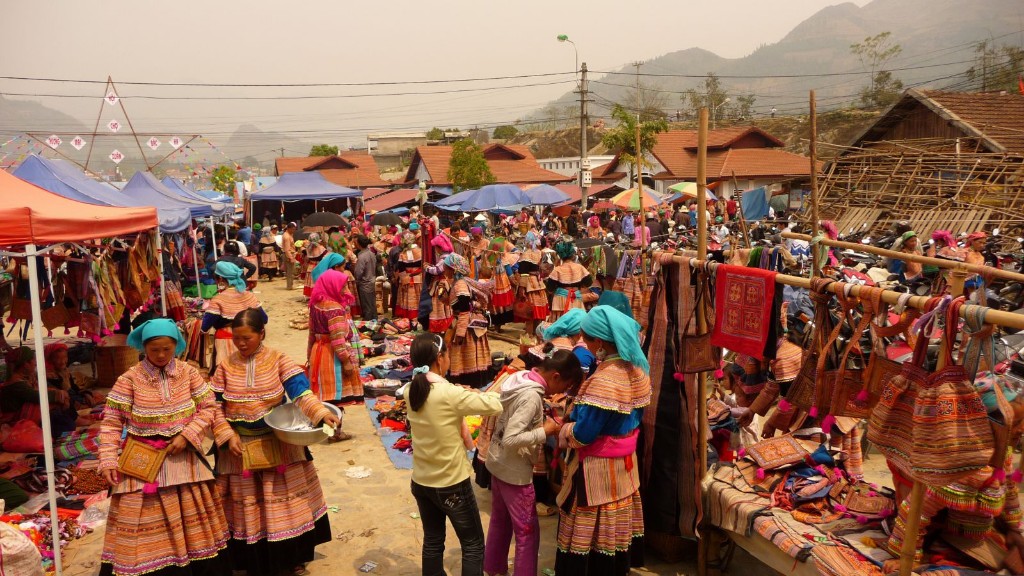-
Far removed from the hustle and bustle of city life, Tam Coc Garden, nestled amidst rice fields, is a jewel of hospitality, gastronomy and romanticism, harmoniously intertwined with local farm life.The benefits of eco-tourism, cultural tourism and combined tourism are conveyed through the architecture and the foundational functioning of Tam Coc Garden. In fact, in keeping with the original construction of an authentic Tonkinese village, surrounded by rice paddies, Read more...
-
The Tomb of Khải Định (Vietnamese: Lăng Khải Định), officially Ứng Mausoleum (Ứng lăng), is located in Chau Chu mountain near Huế in Vietnam. It was built for Khải Định, the twelfth Emperor of the Nguyễn dynasty. It was built from 1920 to 1931 taking 11 years to complete. The tomb is a blend of Western and Eastern architecture. It is located on a steep hill outside of the Read more...
-
Notre-Dame Cathedral Basilica of Saigon , officially Cathedral Basilica of Our Lady of The Immaculate Conception is a cathedral located in the downtown of Ho Chi Minh City, Vietnam. Established by French colonists who initially named it Cathédrale Notre-Dame de Saïgon, the cathedral was constructed between 1863 and 1880. It has two bell towers, reaching a height of 58 meters (190 feet). Read more...
-
Hoan Kiem Lake, meaning “Lake of the Returned Sword“ or “Lake of the Restored Sword”), also known as Hồ Gươm (Sword Lake), is a fresh lake in the historical center of Hanoi, the capital city of Vietnam. Its area is about 12 ha. In the past, the lake also had the name “Luc Thuy Lake”(Vietnamese: Hồ Lục Thủy, meaning “Green Water Lake” – because the water is always Read more...
-
Ha Long Bay is a UNESCO World Heritage Site and popular travel destination in Quang Ninh Province, Vietnam. The name Hạ Long means “descending dragon”. Administratively, the bay belongs to Ha Long City, Cam Pha City, and is a part of Van Don District. The bay features thousands of limestone karsts and isles in various shapes and sizes. Ha Long Bay is a center of a larger zone which includes Bai Tu Long Bay to Read more...
-
Phong Nha Cave is a cave in Phong Nha-Kẻ Bàng National Park, a UNESCO World Heritage Site in Quảng Bình Province, Vietnam. It is 7,729 metres long and contains 14 grottoes, as well as a 13,969 metre underground river. While scientists have surveyed 44.5 kilometres of passages, tourists are only allowed to explore the first 1500 metres. Phong Nha cave, from which the name to the whole Read more...
-
The tunnels of Củ Chi are an immense network of connecting underground tunnels located in the Củ Chi District of Ho Chi Minh City(Saigon), Vietnam, and are part of a much larger network of tunnels that underlie much of the country. The Củ Chi tunnels were the location of several military campaigns during the Vietnam War, and were the Viet Cong’s base of operations for the Tết Offensive in 1968. Read more...
-
Cao Daism is a religion combining Christianity, Buddhism, Islam, Confucianism, Hinduism, Geniism, and Taoism. To put it in another way, Cao Daism is a perfect synthesis of the world’s most powerful religions. In the early 1920s, Cao Daism was established in southern Vietnam but it had not been officially codifieduntil 1926. In Vietnamese language, Cao Dai means “the high tower”. Read more...
-
The Imperial City (Vietnamese: Hoàng thành) is a walled enclosure within the citadel (Kinh thành) of the city of Huế, the former imperial capital of Vietnam. The grounds of the Imperial City are protected by fortified ramparts 2 kilometers by 2 kilometers, and ringed by a moat. The water in the moat is routed from the Perfume River through a series of sluice gates. This enclosure is the citadel (Kinh Read more...
-
The Cham Islands (Vietnamese: Cù lao Chàm) constitute a group of 8 small islands of Quảng Nam, which form a part of the Cu Lao Cham Marine Park, a world Biosphere Reserve recognized by UNESCO, in the South East Asia Sea in Vietnam. The islands are approachable from Cửa Đại beach. The islands are also recognized as Vietnam’s national scenic site. The islands grouped under the Cham Islands are: the Hòn Read more...
-
Hằng Nga guesthouse (Vietnamese: Biệt thự Hằng Nga), popularly known as the “Crazy House” (Vietnamese: Ngôi nhà quái dị), is an unconventional building designed and constructed by Vietnamese architect Đặng Việt Nga in Đà Lạt, Vietnam. Described as a “fairy tale house” (Hằng Nga, Vietnamese, is the Chinese goddess of the Moon), the building’s overall design resembles a giant tree, incorporating sculptured design elements representing natural forms Read more...
-
Bac Ha Market is held every Sunday and is the biggest minority peoples market in Northwest Vietnam. Alive with the bright colours and extravagant costumes of the local people, here you will meet Flower Hmong (Red Hmong), Black Dao, Tay, Nung, La Chi, Phu La and other minority groups who come from far and wide to buy and sell a Read more...
-
With a coastline of 35km long from Hai Van Pass to Non Nuoc, Da nang is one of the most beautiful coastal cities in Vietnam. Closed to the city center (5km), the most popular beach My Khe is the common name of the coastline lasted 10km from the base of the Son Tra Peninsula to the Marble Mountains (Ngu Hanh Son). Read more...
-
Amidst the well populated suburbs of Attidiya, just outside Colombo, lie the marshy lands of Attidiya Bird Sanctuary. Bordering the famous Bellanwila Buddhist Temple; the sanctuary has rich and diverse birdlife, despite its comparatively smaller area. The Attidiya Bird Sanctuary is well known for its migratory and endemic water birds; but is also a great place to watch butterflies Quick Read more...

